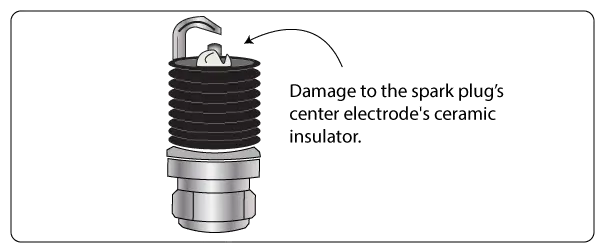A1 Engine Repair Quiz
1. Technician A says the valves in many interference engines open further into the combustion chamber that than those of a non-interference engine. Technician B says a broken timing belt in an interference engine can result in damage to the engine's valve train. Who is correct?
2. The spark plug is removed and shop air is introduced to the #1 cylinder while at TDC. Bubbles are seen in the radiator neck. The MOST likely cause of this condition is:
3. A vehicle is emitting black smoke from its tailpipe, has poor fuel mileage and the torque converter is not engaging. Technician A says the ECT sensor's signal will effect TCC application. Technician B says the ECT sensor will affect the engine's fuel mixture. Who is correct?
4. Technician A says a flex fan will increase its pitch at higher engine speeds. Technician B says a viscous fan clutch contains a silicon based fluid and should be checked for leaks. Who is correct?
6. After performing a cylinder pressure test on a four cylinder engine, the #1 cylinder is 30 psi below specifications. All the other cylinders have passed. The pressure in the #1 cylinder increased after injecting engine oil. Technician A says excessive carbon buildup on the piston head has caused these test results. Technician B says these results indicate a faulty intake or exhaust valve. Who is correct?
7. One valve tip on a cylinder head is much higher than the others. The MOST likely cause of this is:
8. Two technicians are discussing a ballooned oil filter. WhIch of these is causing this condition:
10. An engine has excessive crankshaft endplay. Which of the following is MOST likely causing this condition?

12. Two technicians are discussing an engine that suffers from repeated spark plug failure. Technician A says a hot spark plug with too high of a heat range may result in detonation. Technician B says a cold spark plug with too low of a heat range may foul prematurely. Who is correct?
13. A light truck with a DOHC V6 engine and a manual transmission is making a rattling noise at idle, near the bottom rear end of the engine. This noise increases with engine speed. Technician A says the flywheel bolts may be loose. Technician B says this noise is likely caused by hydraulic lifter leak down. Who is correct?
14. An oil pressure switch is being tested for operation. Technician A says to use a digital multimeter. Technician B says this switch can be tested on the vehicle. Who is correct?
15. Two technicians are discussing an engine with a collapsed radiator hose. Technician A says this is caused by a faulty radiator cap. Technician B says this is caused by insufficient coolant level. Who is correct?
16. A vehicle is overheating, but returns to normal at idle. Both of the engine’s electric cooling fans are functioning correctly. Technician A says this could be caused by an internal restriction in the radiator. Technician B says an infrared thermometer is used to diagnose this problem. Who is correct?
17. A metallic knocking sound is heard behind an engine's harmonic balancer. An oil pressure test indicates oil pressure is below specifications. Technician A says the engine's main bearing inserts should be inspected for wear. Technician B says a worn thin crankshaft thrust bearing will cause this condition. Who is correct?
18. A vehicle vibrates only when placed in reverse. The MOST likely cause of this condition is:
19. Two technicians are discussing a turbocharged engine. Technician A says the wastegate is a component used to control boost pressure. Technician B says when opened, the wastegate diverts exhaust gas from the turbine wheel. Who is correct?
20. Technician A says that torque to yield bolts can always be reused. Technician B says that torque to yield bolts can be reused as long as they are cleaned and oiled before they are reinstalled and torqued. Who is correct?
Please select an answer
